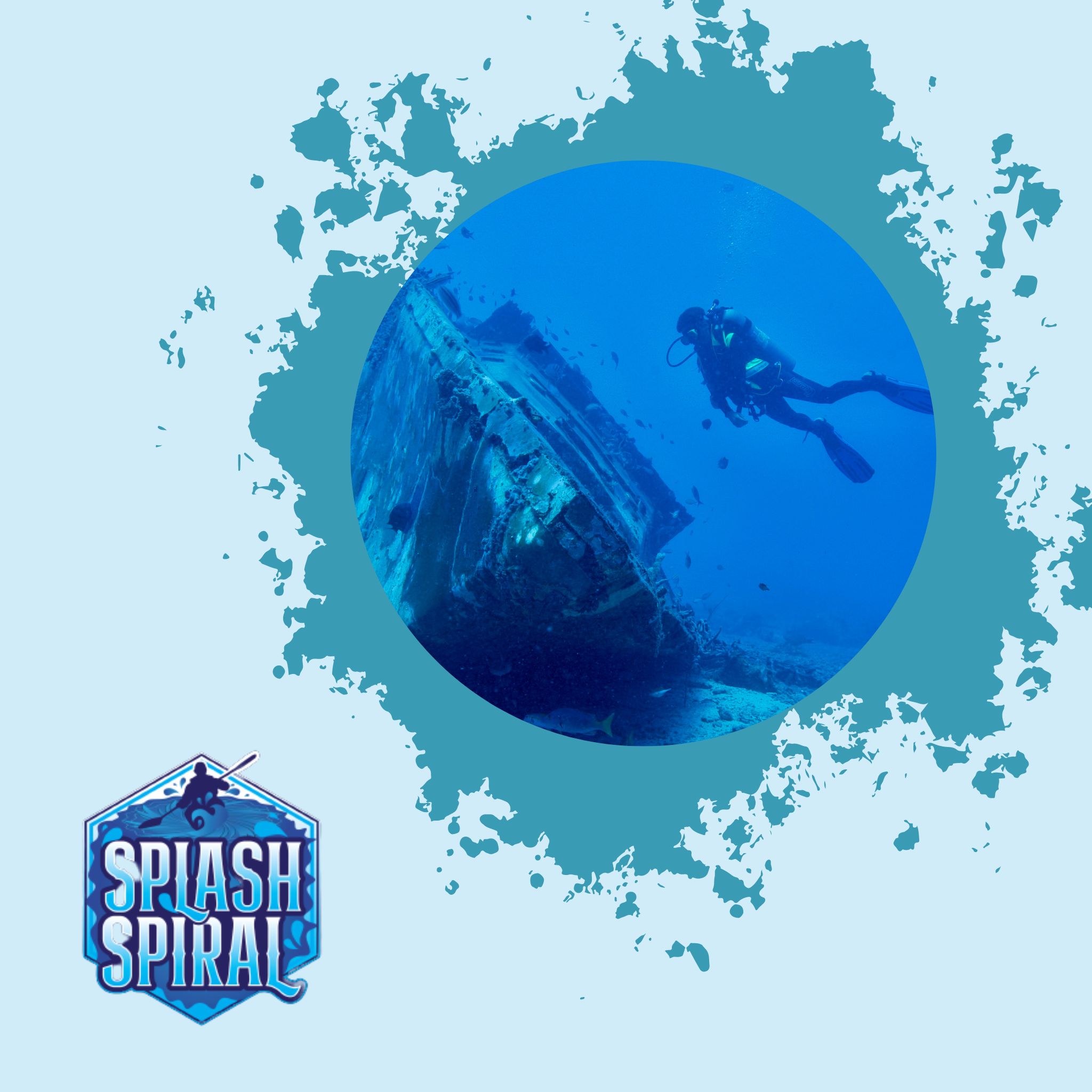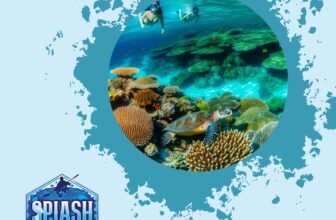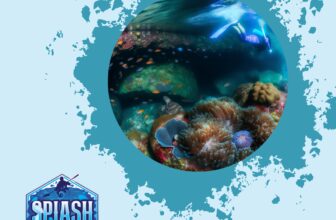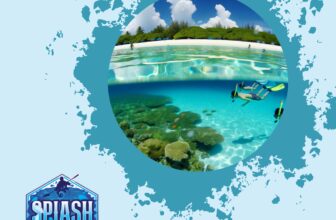
Have you ever been fascinated by the stories of sunken ships and the treasures they hold? If so, you might have what it takes to be a wreck diver.
Wreck diving is a type of scuba diving that involves exploring the remains of sunken ships, airplanes, and other structures underwater. It’s an activity that appeals to many divers because it offers a unique combination of adventure, history, and mystery.
One reason why wreck diving is so appealing is the sense of discovery that comes with exploring uncharted territory. Unlike other types of diving where you might see similar things each time, wreck dives are full of surprises.
Each dive can reveal something new and unexpected – perhaps a hidden compartment filled with treasure or an unusual species that has made its home in the wreckage. Of course, wreck diving isn’t just about uncovering treasures and discovering new things.
It’s also important to approach this activity with caution as there are many risks involved if proper safety protocols are not followed. That’s why preparation is key when it comes to wreck diving.
Before embarking on any dives, divers must be properly trained in advanced scuba techniques and always adhere to strict safety practices. Proper equipment is absolutely essential too – from dive lights for exploring dark crevices to specialized air tanks for deeper dives – everything must be carefully selected and skillfully used.
Wreck diving doesn’t come without its challenges but for those willing to put in the effort, it can be one of the most rewarding experiences in the world underwater exploration. So if you’re ready for some adventure while making history come alive beneath your fins then get ready because we’re going on an unforgettable journey full of mystery and excitement!
The Thrill of Discovery
Finding a new wreck site
Wreck diving is all about exploring the unexplored, and there’s no better way to do that than by discovering a new wreck site. Whether it’s stumbling upon one by chance or purposefully searching for one, the rush of finding something that hasn’t been seen or touched in years is unparalleled.
It’s like being an underwater Indiana Jones, uncovering lost treasures and secrets hidden beneath the waves. Of course, finding a new wreck site isn’t easy.
It takes patience, persistence, and sometimes just plain luck. But when you finally come across something that no one else has seen before, it’s an incredible feeling.
Excitement of exploring uncharted territory
Once you’ve found a new wreck site, the real adventure begins as you explore uncharted territory. There’s something thrilling about being the first person to see what lies beneath the surface after so many years. You never know what you might find – from forgotten artifacts to hidden rooms and passageways.
Exploring these wrecks requires both physical and mental preparation. Divers must be in good shape to navigate through tight spaces and brave enough to confront any unexpected dangers that may arise while exploring.
But for those who are up for the challenge, the reward is immense. The sense of accomplishment from charting new territory and making discoveries that will contribute to historical research is exhilarating.
Conclusion: The Thrill of Discovery
The thrill of discovery is what draws many divers to wreck diving in the first place – there’s no feeling quite like finding something new under water. From stumbling upon a forgotten shipwreck by chance to purposefully searching for unexplored territory,the excitement of discovering something that has been hidden away for years never fades away.
Of course,it takes skill,mindset and preparation to explore the hidden treasures under water. But for those who are willing to put in the work, the reward is unforgettable.
The Artifacts Left Behind
Preservation Efforts and Ethical Considerations
When it comes to diving wrecks, there are always ethical considerations at play. These are sites of tragedy and loss, and it’s important to treat them with respect. Many jurisdictions have laws around what can be taken from a wreck site, and some may even require permits for diving in certain areas.
Preservation efforts also come into play here: artifacts left on the ocean floor deteriorate faster than they would on land, so divers must be careful not to disturb anything that could be important to researchers or historians. In many cases, taking something from a wreck site is illegal or punishable by fines.
Unique Items Found in Wrecks
One of the biggest appeals of wreck diving is the chance to find unique artifacts that have been lost for centuries. These can include everything from pottery and coins to cannons and anchors. Depending on the age of the wreck and its location, divers might also encounter items like jewelry, tools, or even clothing that would not have survived outside of the preserved environment underwater.
These finds can offer insight into how people lived during different time periods, as well as how trade routes were established between different countries. Some items might even hint at a ship’s original purpose or where it came from.
The History Beneath the Surface
The artifacts left behind after a shipwreck tell a story that goes beyond just what was lost when it sank. These sites can offer glimpses into history that we might not otherwise have access to: for example, we know about trade between ancient civilizations because of ancient shipwrecks found off the coast of places like Greece and Egypt.
Famous wrecks like Titanic also offer insights into social constructs at the time: who was allowed on lifeboats first? How did class divisions affect survival rates?
There are countless stories to be told from the wrecks that lie beneath the surface, and each one offers a unique perspective on history. With modern technology helping to preserve these sites, we can continue to learn from them for generations to come.
The History Beneath the Surface
When you explore a wreck, you are not just seeing a pile of rusty metal and debris. You are uncovering a piece of history that has been hidden beneath the waves for years, sometimes even centuries.
Shipwrecks can teach us about trade routes, technological advancements, and cultural exchange in ways that no book or lecture ever could. Through the preservation of these submerged artifacts, we can also learn about everyday life in different time periods.
For example, by examining the cargo on board a shipwrecked vessel from the 17th century, historians have been able to piece together what people were eating and drinking at that time. In some cases, they have even discovered new species of plants or animals that were being transported for trade.
Famous Wrecks and Their Stories
Some wrecks have become famous not just for their historical significance but also because of the stories surrounding them. One such ship is the Titanic, which sank in 1912 after hitting an iceberg on its maiden voyage.
Over 100 years later, people are still fascinated by this tragedy and the lives lost aboard it. Another famous wreck is the USS Arizona in Pearl Harbor.
This battleship was sunk during Japan’s surprise attack on December 7th, 1941 which brought America into World War II. Today it serves as a memorial to those who died during this significant event in American history.
There are many more wrecks with interesting stories waiting to be uncovered by adventurous divers. From pirate ships to World War II submarines to ancient Roman galleys – each wreck holds a unique tale waiting to be told.
Learning About The Past Through Shipwrecks
In addition to discovering fascinating stories about specific wrecks themselves; diving into preserved shipwrecks reveals much about how we lived our lives throughout history; including the way we interacted with the sea, climate, and travel. For example, studying shipwrecks can tell us about ancient trade routes and maritime commerce. Furthermore, examining and preserving historic wrecks is also important for society.
It helps us remember the past through artifacts rather than just stories or traditions. In a time when history is prone to being lost or distorted; studying shipwrecks provides an accurate portrayal of what life was like in different times in history.
By exploring shipwrecks we can learn about our human heritage – both cultural and technological. And while each wreck has its own unique story to tell; they all have one commonality: they offer a glimpse into the past that we might not otherwise have access to – a way to connect with those who came before us abandoned beneath the waves of time.
Technical Aspects of Wreck Diving
Equipment needed for deeper dives
When it comes to wreck diving, proper equipment is crucial. While open water diving gear can be used for shallower wrecks, deeper dives require specialized gear. A full-face mask and a dry suit are recommended for deeper dives to protect against the cold and potential hazards.
Additionally, a dive computer is necessary to track nitrogen levels and calculate decompression stops. Another important piece of equipment for wreck diving is a reel.
This allows divers to establish a guideline that will lead them back to the surface in case visibility decreases or they become disoriented. In case of emergencies underwater, it’s also essential that every diver carries an open-water surface marker buoy (SMB), which can help rescuers locate them.
Challenges posed by currents, visibility, and depth
Wreck diving also comes with its own set of challenges compared to open water diving. Currents can be stronger near wrecks due to their effect on water flow around structures, making it difficult to swim against them. Visibility can also be poor near wrecks due to sediment stirred up by waves or nearby construction work.
The deeper you go while wreck diving the greater the risk of nitrogen narcosis, oxygen toxicity, and decompression sickness. Nitrogen narcosis causes euphoria or confusion in divers at depths greater than 100ft/30meters due to increased pressure on nitrogen gas inhaled during breathing.
Oxygen toxicity occurs when too much oxygen is breathed during exposure times beyond safe limits while decompression sickness happens when dissolved gases come out of solution into bubbles inside the body upon ascent from deep dives. Despite its challenges and risks technical aspects represent an essential component for safe wreck diving experiences: good quality equipment ensures comfort and safety while training helps divers cope with potential hazards – allowing them more time to enjoy the mysteries of the deep.
Dangers and Risks
Wreck diving can be an exhilarating experience, but it is not without its dangers. As with any extreme sport, it is important to have the proper training and experience before attempting to dive into a wreck. Even then, there are risks involved that should never be taken lightly.
Importance of training and experience
Before you even think about jumping into a shipwreck, you need to have the proper training and experience. This includes knowledge of diving theory, technical skills, and experience in open water environments.
It’s a good idea to take classes from certified instructors who have years of experience in wreck diving. Aside from the technical skills required for diving in general, there are specific techniques that must be mastered when exploring wrecks.
For example, divers need to know how to handle potentially dangerous artifacts without damaging them or disturbing their surroundings. Proper buoyancy control is also key when navigating narrow passages between debris or tricky currents.
Common hazards such as entanglement, equipment failure, and decompression sickness
Wreck diving poses numerous hazards that require advanced training and specialized equipment to mitigate. Some of the most common risks include getting entangled in wires or ropes left behind from the wreckage or becoming trapped inside tight spaces with limited air supply. Equipment failure is also a significant risk when wreck diving since many pieces of gear are required for safe exploration at depth.
From tanks that may leak or malfunctioning regulators that could leave divers without air underwater – pre-dive checks must always be conducted to ensure all gear is working properly before entering the water. Decompression sickness (DCS), commonly known as “the bends,” can result from ascending too quickly after spending time at depth during your dive.
DCS symptoms include headaches, joint pain, fatigue among others which can vary widely in severity depending on several factors like age, diving history, and physical condition. All of these risks can be minimized by taking a gradual approach to your training and becoming proficient in the techniques required for safe wreck diving.
The Environmental Impact of Wreck Diving
Wreck diving can have a significant impact on the marine environment and ecosystems. The disturbance caused by divers exploring wrecks can disrupt habitats and displace marine life.
Divers must take care to avoid damaging delicate coral reefs or disturbing marine animals such as turtles, fish, and crustaceans. It is important to remember that we are visitors in their homes.
Some wrecks may contain hazardous materials such as oil or fuel that can leak into the surrounding water and cause pollution. It is essential to ensure that these materials are removed safely before any diving takes place.
Furthermore, careless divers who leave behind trash or litter can contribute to the growing problem of ocean pollution. Responsible divers should always carry a mesh bag for collecting any debris they encounter during their dives.
Protecting Wrecks as Cultural Heritage Sites
Wrecks have great historical value, providing insight into our past and preserving important artifacts for future generations. As such, they are often protected by governments as cultural heritage sites. In many cases, it is illegal to remove items from a wreck or disturb its resting place in any way.
Efforts are being made by governments around the world to preserve wrecks through legislation and conservation initiatives. Some countries have established underwater parks specifically aimed at protecting wreck sites and promoting responsible diving practices among visitors.
Divers must play their part too in protecting wrecks as cultural heritage sites by abiding by laws and regulations governing wrecks in their area of operation. They should also be mindful of ethical considerations when encountering artifacts during their explorations – it’s important not to touch or move anything without permission from authorities.
The Bigger Picture
While wreck diving provides an exciting opportunity for adventure and exploration, it’s essential to consider the bigger picture when participating in this activity. We must understand our impact on the environment and respect the importance of preserving wrecks as cultural heritage sites. By doing so, we can ensure that future generations can enjoy the same experiences and learn from the history that lies beneath the waves.
Conclusion: Why Wreck Diving is Worth It
Personal Growth Through Adventure and Exploration
Wreck diving is not just a physically challenging activity but it also provides opportunities for personal growth through adventure and exploration. The excitement of discovering new sites, diving deeper, and exploring uncharted territory can be thrilling in ways that are difficult to describe.
Wreck diving requires a great deal of focus and discipline, which can help divers develop important life skills such as patience, attention to detail, and perseverance. In addition to the thrill of discovery, wreck diving also provides an opportunity for introspection.
Being underwater surrounded by the quiet stillness of the ocean can be a meditative experience that allows divers to reflect on their lives outside of the water. Many divers report feeling a sense of serenity and peace while exploring the mysteries hidden beneath the waves.
Contribution to Historical Research
Wreck diving can also make an important contribution to historical research by uncovering artifacts that provide valuable insights into the past. Every shipwreck holds unique stories about the people who sailed on them, their cultures, economies and historical events. By preserving these wrecks as cultural heritage sites, there is an opportunity for researchers across disciplines such as archaeology , history or anthropology to study them more closely.
The preservation efforts by wreck divers will allow future generations not only to learn from these wrecks but also enjoy them at least in their present state. This is crucial because some wrecks will continue deteriorating until they disappear completely if they’re left unattended or unprotected.
A Final Thought
Wreck diving is undoubtedly worth it because it offers something truly unique – an opportunity for adventure, exploration, personal growth while contributing something meaningful towards historical research efforts. Whether you’re a beginner or experienced diver – there’s always more to learn about shipwrecks and their hidden stories.
So why not take the plunge and explore the mysteries beneath the surface? You never know what you might discover.







